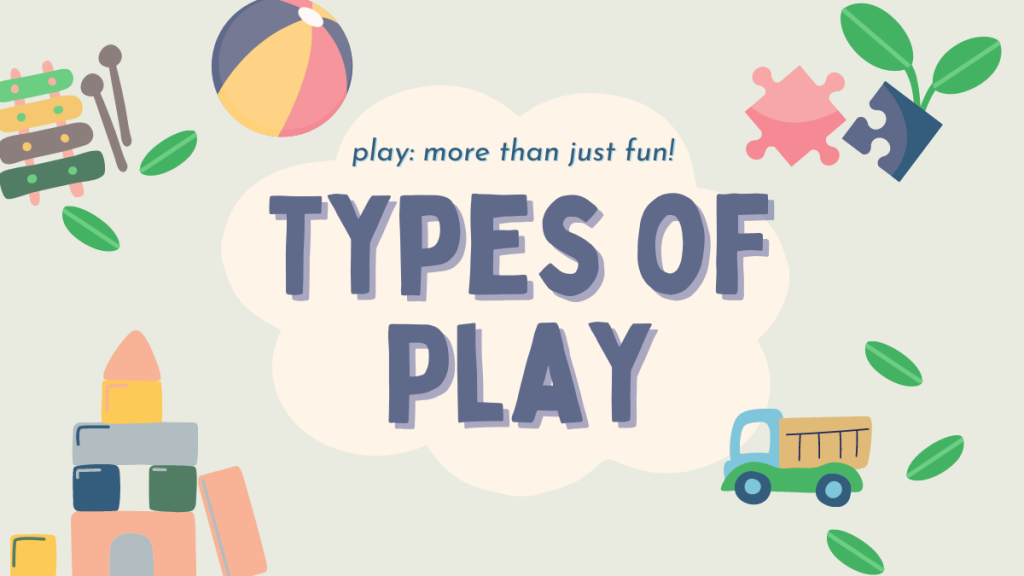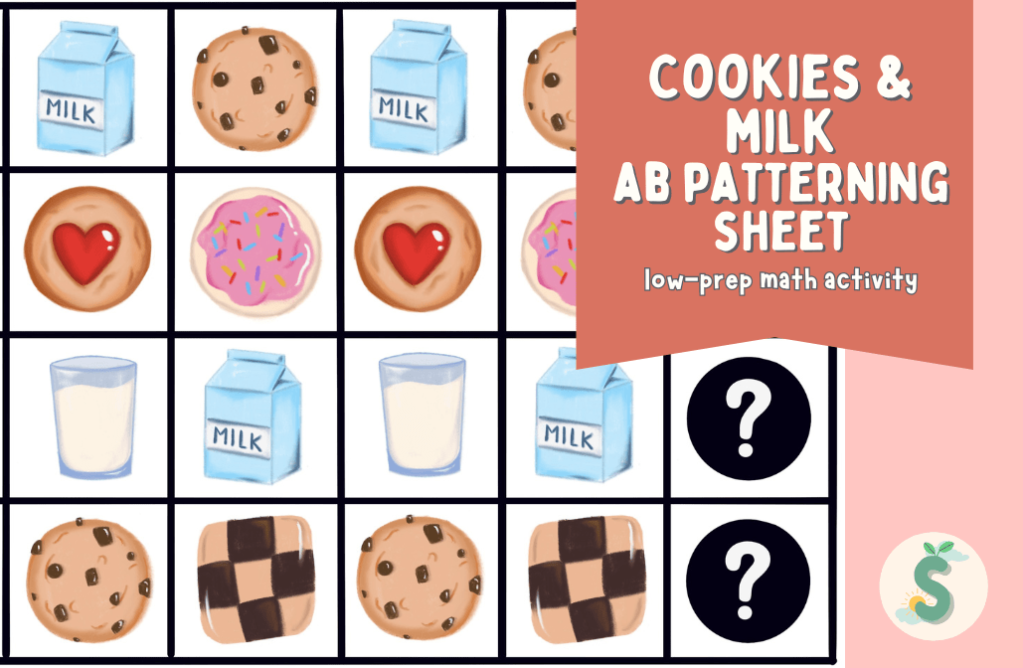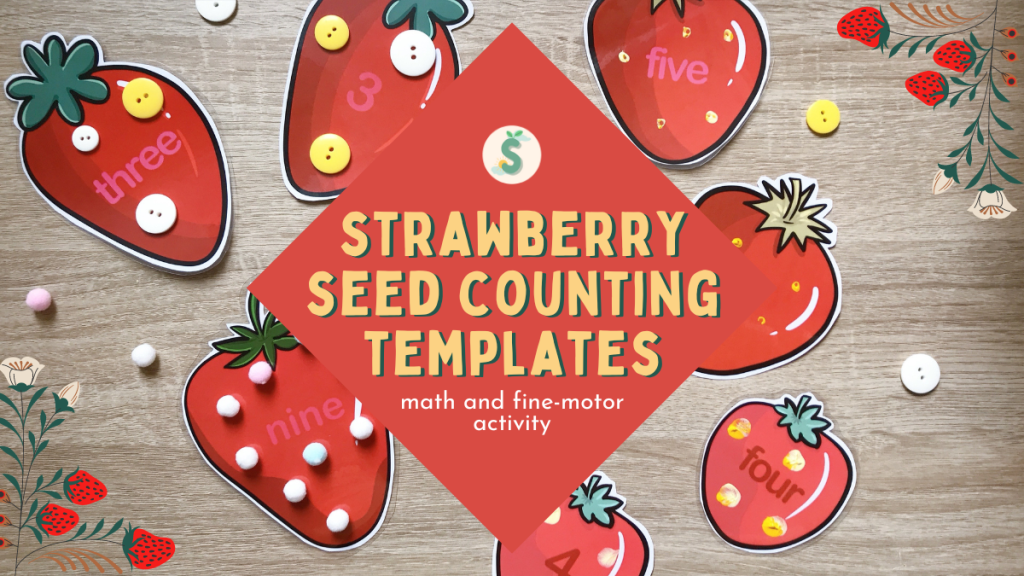Early childhood consists of the ages two through six and is also known as “the play years.” With that title, it’s no wonder that play is a vital tool that childcare providers should take advantage of. Though adults can easily dismiss the act of playing, they cannot overlook the excellent benefits play can provide which can be found in all domains of child development.
In this new series, Play: More than Just Fun! we’ll discuss the benefits of play, how we can encourage play, different types of play, and beneficial play materials. But first, let’s talk about the different types of play!
Types of Play
Sociologist Mildred Parten described six stages of play that each child in early childhood will go through. These include unoccupied play, solitary play, onlooker play, parallel play, associative play, and cooperative play.
Unoccupied Play: Birth-3 Months
This type of play occurs more in Infancy and Toddlerhood. It consists of behavior that seems a bit random, with no real goal or purpose, though children are exploring with their senses.
Solitary Play: 3 Months-2 1/2 Years
Solitary Play is just like how it sounds; children engaging in solitary play are playing by themselves, without worrying too much about the people or toys around them. This type of play contains more focus than unoccupied play.
Onlooker Play: 2 1/2-3 1/2 Years
In Onlooker Play, children are now beginning to take an interest in what others are doing. They observe the activities of others around them, and can make suggestions or comments, but will not directly join the play.
Parallel Play: 3 1/2-4 Years
Following Onlooker Play, Parallel Play consists of children playing alongside each other, but not necessarily playing with each other. They may play with the same materials, but they will not play together. For example, two children may both be playing with building blocks, but they are building separate things.
Associative Play: 4-4 1/2 Years
Associative Play is a little similar to Parallel Play. Children in Associative Play will interact with each other, share materials, and play alongside each other, but they aren’t necessarily working together towards a common goal. As explained by Helpful Professor, “Associative play differs from parallel play because children begin to share, acknowledge, copy and work with one another.”
Cooperative Play: 4 1/2 Years & Up
Cooperative Play is the culmination of the previous play stages. Children are now beginning to work together towards a common goal, and may even assign different tasks to different members to reach that goal.
It’s important to mention that though these are stages that children go through as they grow, they can still participate in the previous stages as they wish.
For more information and examples about each type of play, check out this post by Helpful Professor!
Piaget’s Stages of Play
Piaget also divided play into four different stages. To read more about Piaget and his theories, check out our Theory Inquiries series or click here!
Functional Play
Functional play occurs during the sensorimotor stage (birth-two years old), and continues until four years old. This stage of play is mainly physical and focuses on sensory experiences and experimentation. Examples of functional play include running, skipping, jumping, or any other type of sensory activity.
Constructive Play
Constructive play occurs during ages three to seven, and as they grow older within this stage, they will include symbolic play elements (which we’ll discuss next), as well! In the Constructive Play stage, however, children begin to play with toys and materials toward a goal, such as building a block tower.
Symbolic Play
In this play stage, children from three to twelve years old take part in imaginative or symbolic play. Their games can be make-believe or based on fantasy, like pretending to be a fairy. Or, these games can be based on realistic role play, like playing house or pretending to be a firefighter.
Games with Rules
Games with Rules typically begin at around seven years old and continue on throughout life. In this last state, children begin to play games that have pre-determined rules, such as red light/green light, freeze tag, or other types of games such as video games, and board games. This stage encourages cooperation and competition, and children understand that they must follow the rules or they must face the results of breaking those rules.
Conclusion
Though play can be divided into different types and stages, like how we’ve discussed in this post, all play is beneficial! Next, we’ll talk about these benefits and how each developmental domain is impacted.
Happy Playing!
References
Websites
Books/Articles
Berk, L. E. (2018). Exploring Child Development. Pearson Education (US). https://bookshelf.vitalsource.com/books/9780134983813










Leave a comment